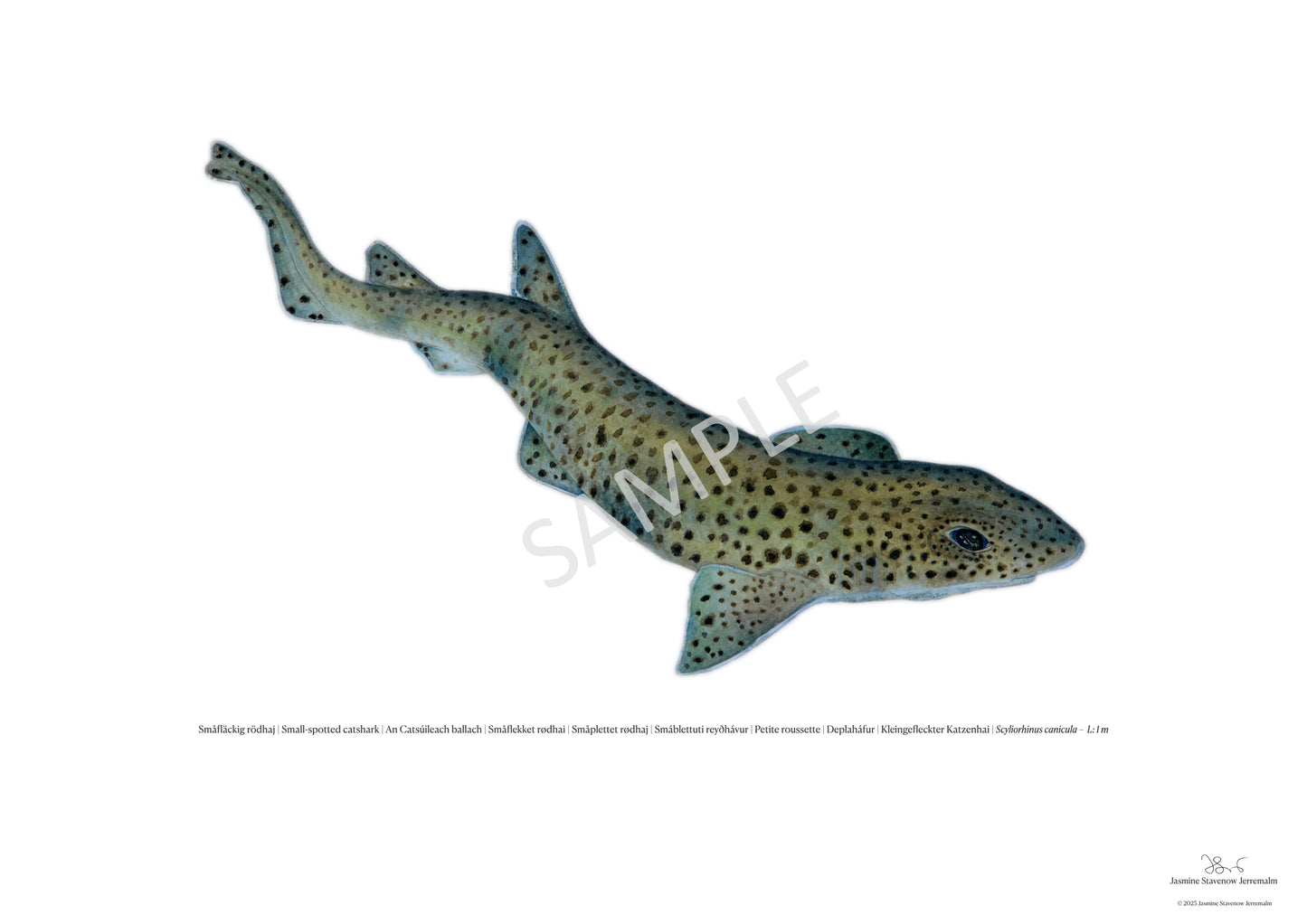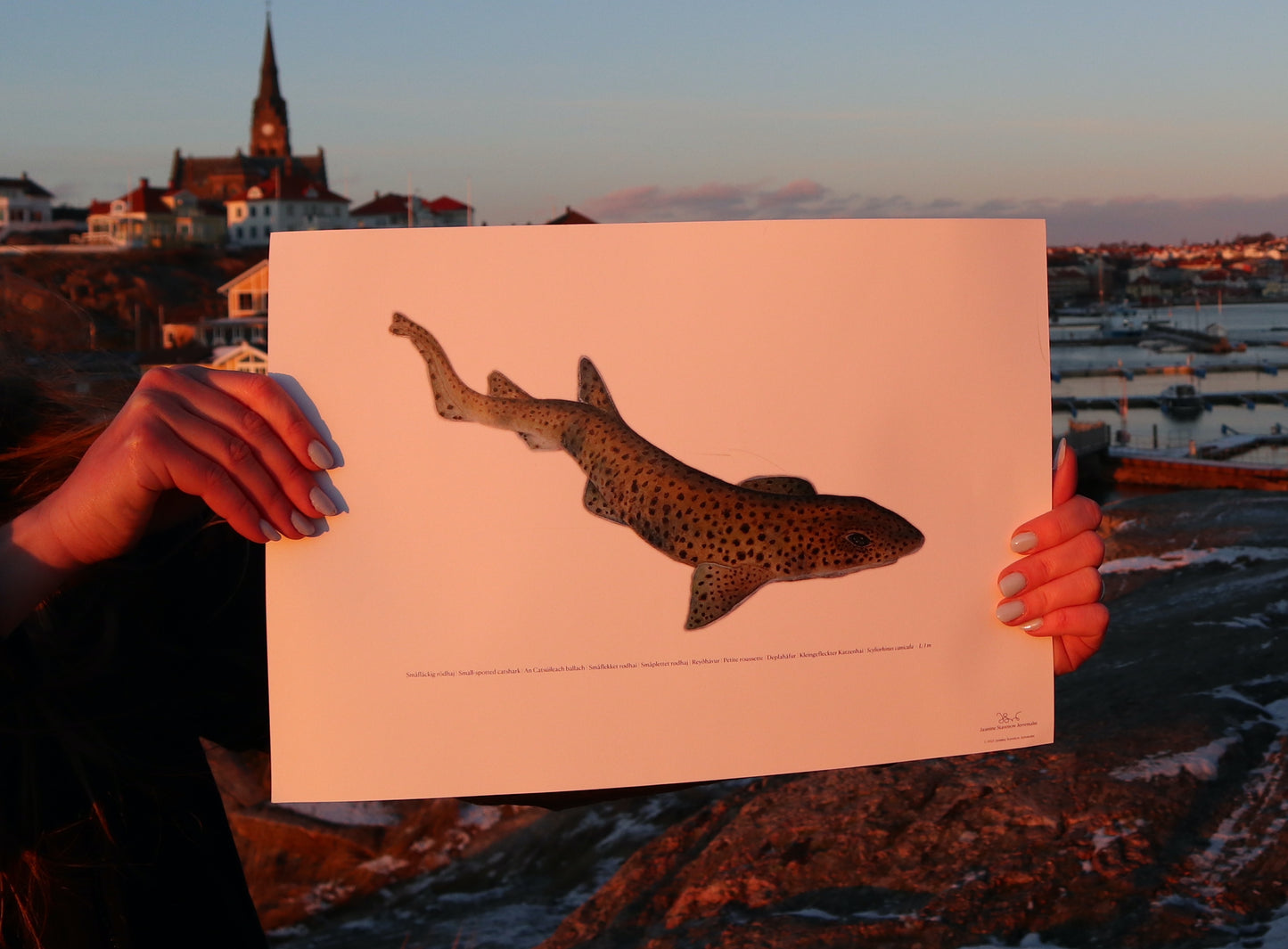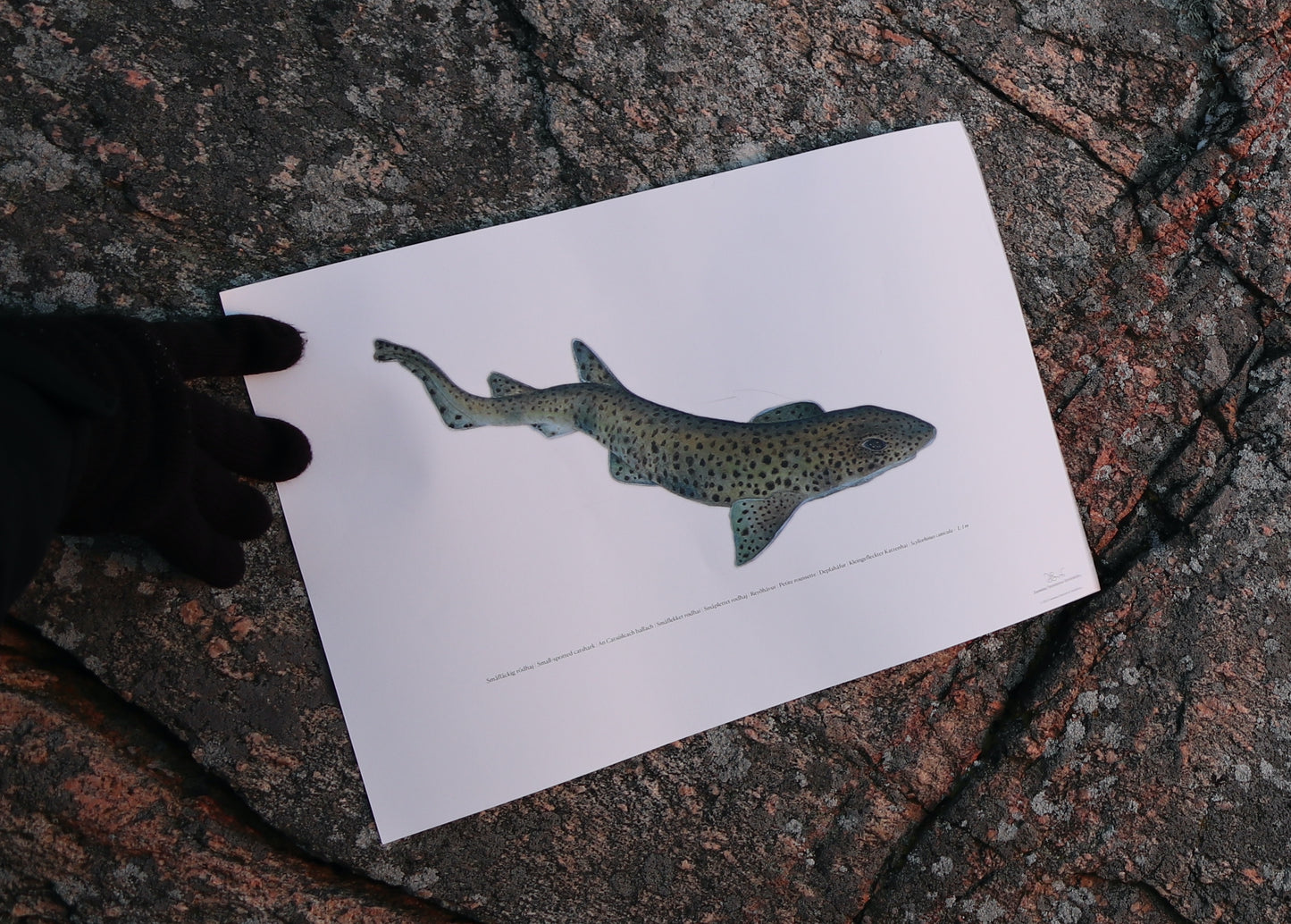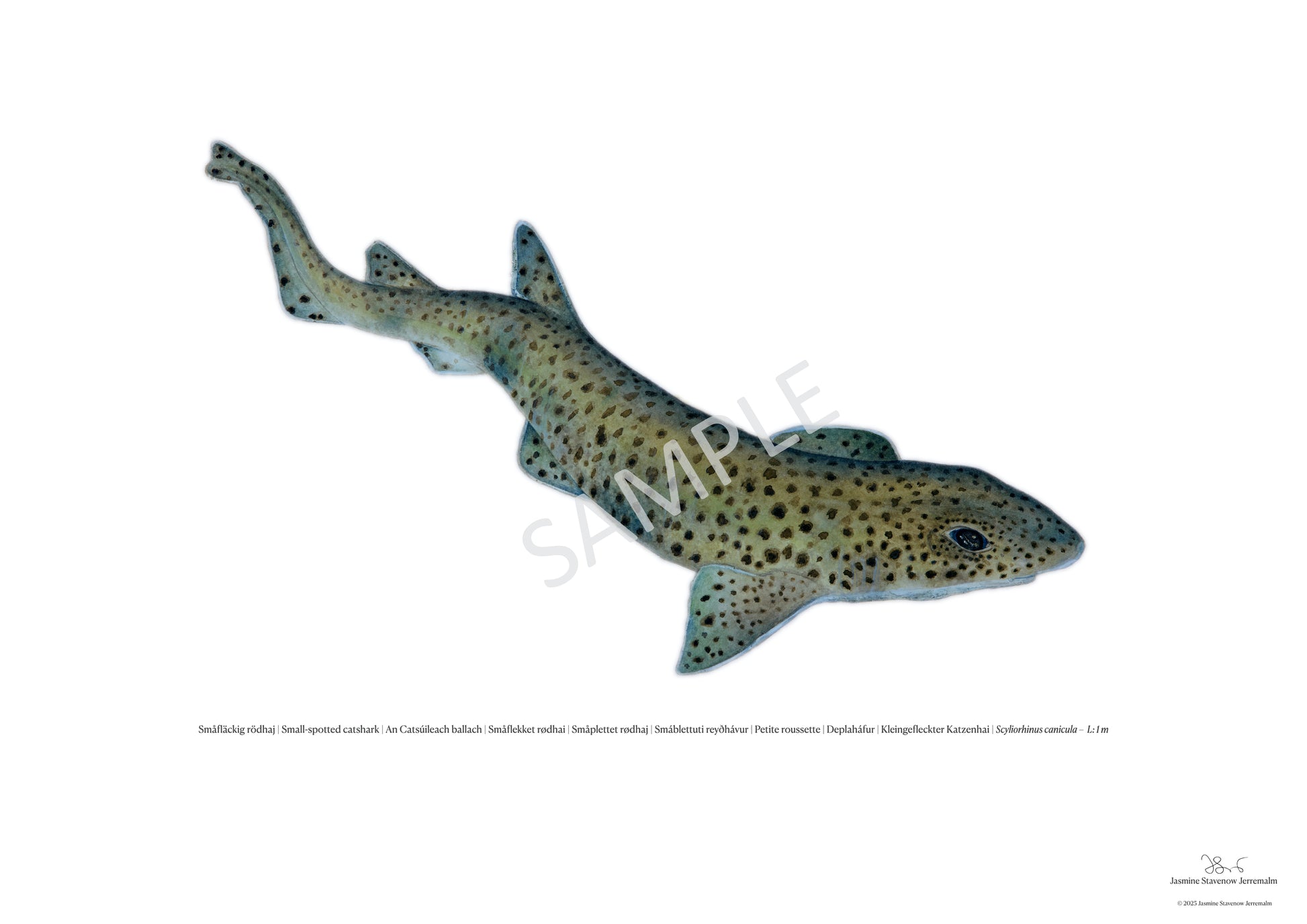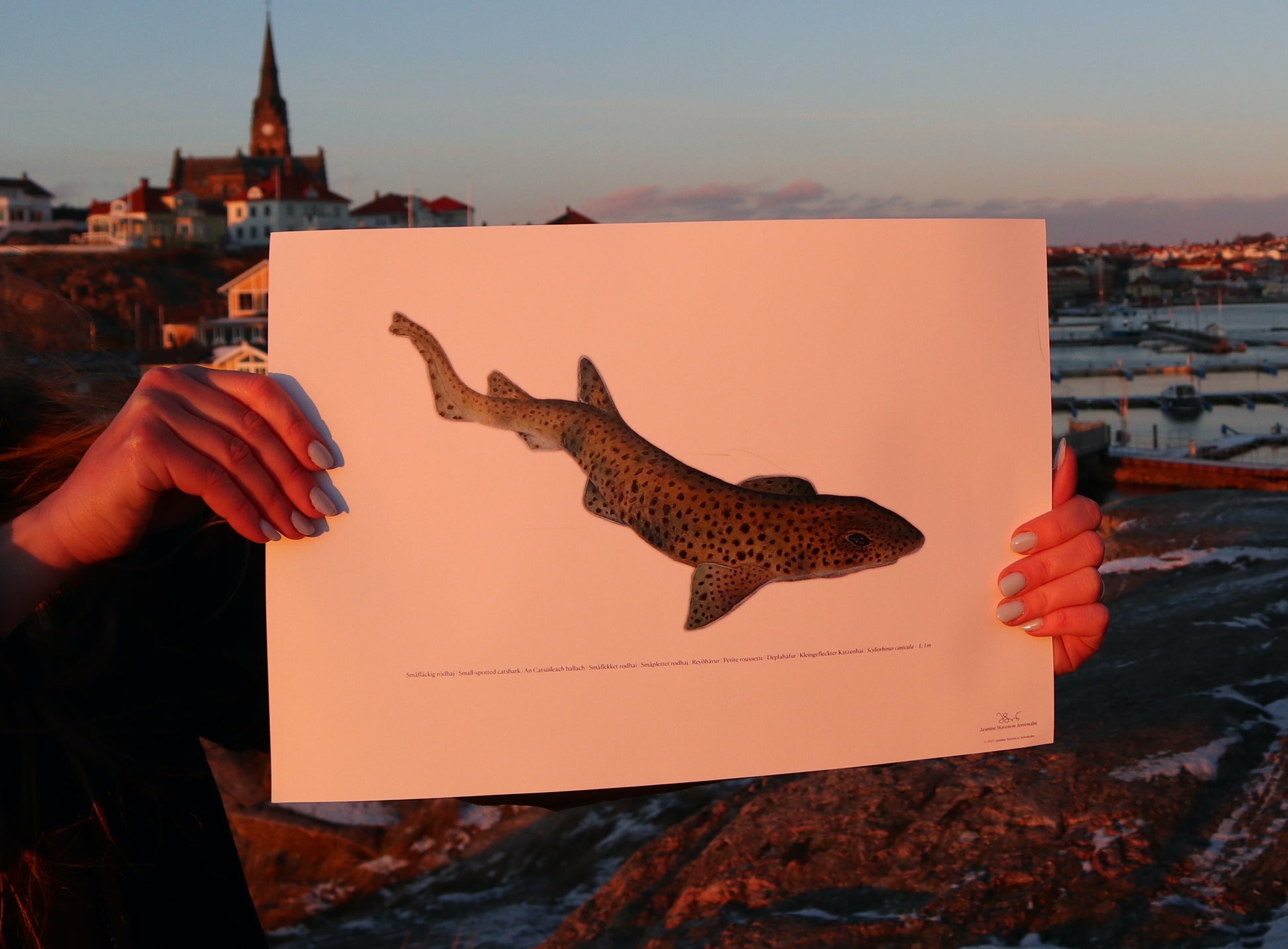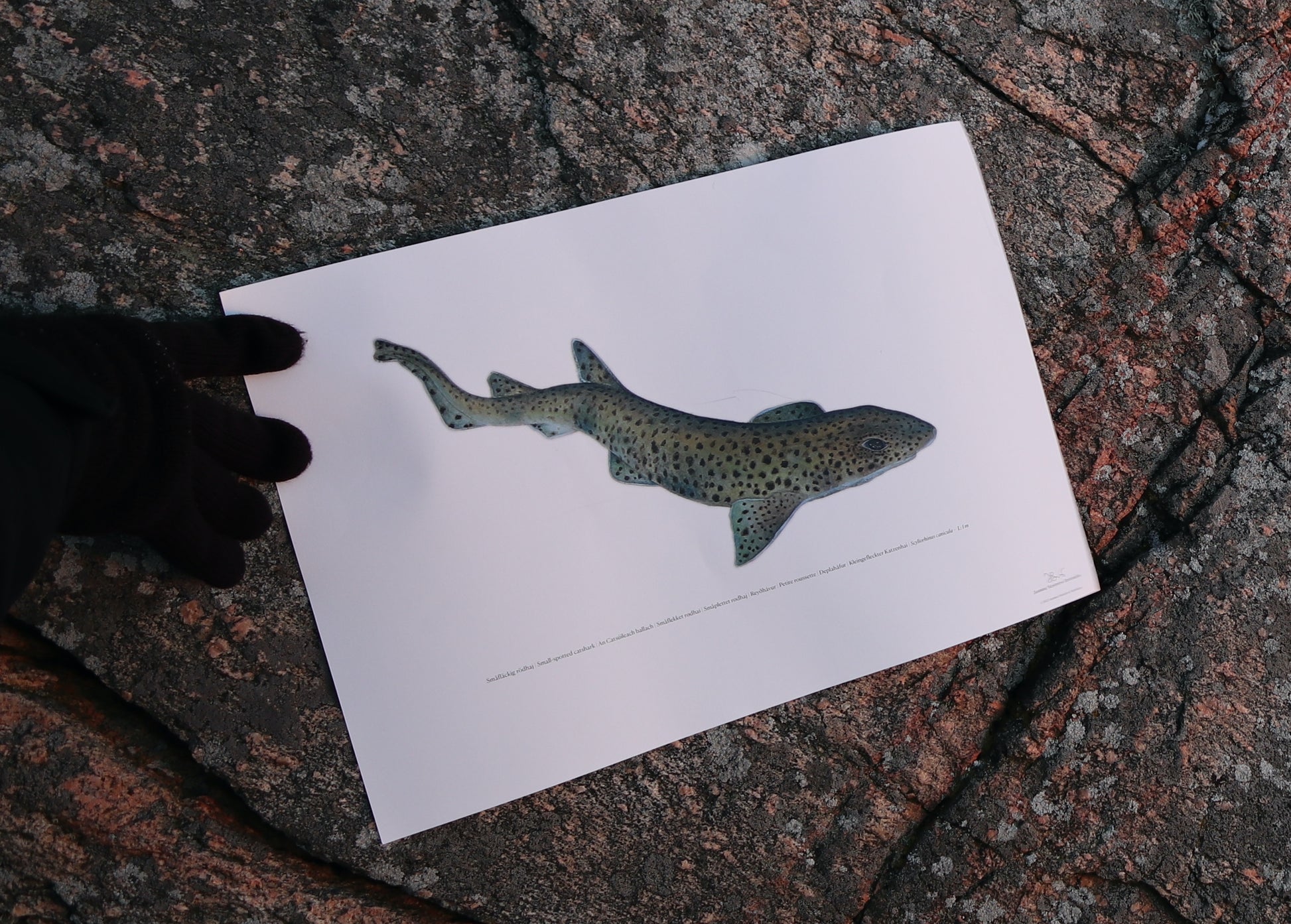Whales et al. ART
Småfläckig rödhaj | Small-spotted catshark
Småfläckig rödhaj | Small-spotted catshark
Couldn't load pickup availability
Småfläckig rödhaj | Small-spotted catshark - Poster print
Water colour illustration - Global species collection
Size: A3 paper
High quality silk paper (200gsm)
Below the water colour illustration, there is a single text line with knowledge about the species. You'll find the common species names in multiple languages, including its latin species name (see below) and also information about the size of the species.
Swedish: Småfläckig rödhaj
English: Small-spotted catshark
Gaelige: An Catsúileach ballach
Norwegian: Småflekket rødhai
Danish: Småplettet rødhaj
Faroese: Smáblettuti reyðhávur
French: Petite roussette
Icelandic: Deplaháfur
German: Kleingefleckter Katzenhai
Latin species name: Scyliorhinus canicula
About Small-spotted catsharks
The Small-spotted catshark, (also known as the lesser spotted dogfish), is a small and slender shark commonly found in the temperate waters of the Northeast Atlantic, but also in the Mediterranean Sea. This species is typically found on the seafloor, favoring sandy or gravelly habitats where it can blend into its surroundings using its mottled brown and white coloration. Feeding primarily on small fish, crustaceans, and mollusks, these sharks are nocturnal hunters, relying on their keen senses to locate prey. Small-spotted catsharks are oviparous, laying distinctive egg cases known as "mermaid’s purses," which are often found washed ashore. Although they are one of the most abundant shark species in their range, they are harmless to humans and are a common subject of marine research due to their adaptability and abundance. Despite their resilience, they face pressures from overfishing and habitat degradation, making sustainable management important for their long-term conservation.
The Global Species Collection aims to highlight species that are familiar to many, as they are widely distributed and in many places numerous. In several geographical regions, they have played, and still play, important roles in human cultures, and they have names in many languages. They are some of the most loved and charismatic species, still they hold many secrets left for science to unveil.
Share
